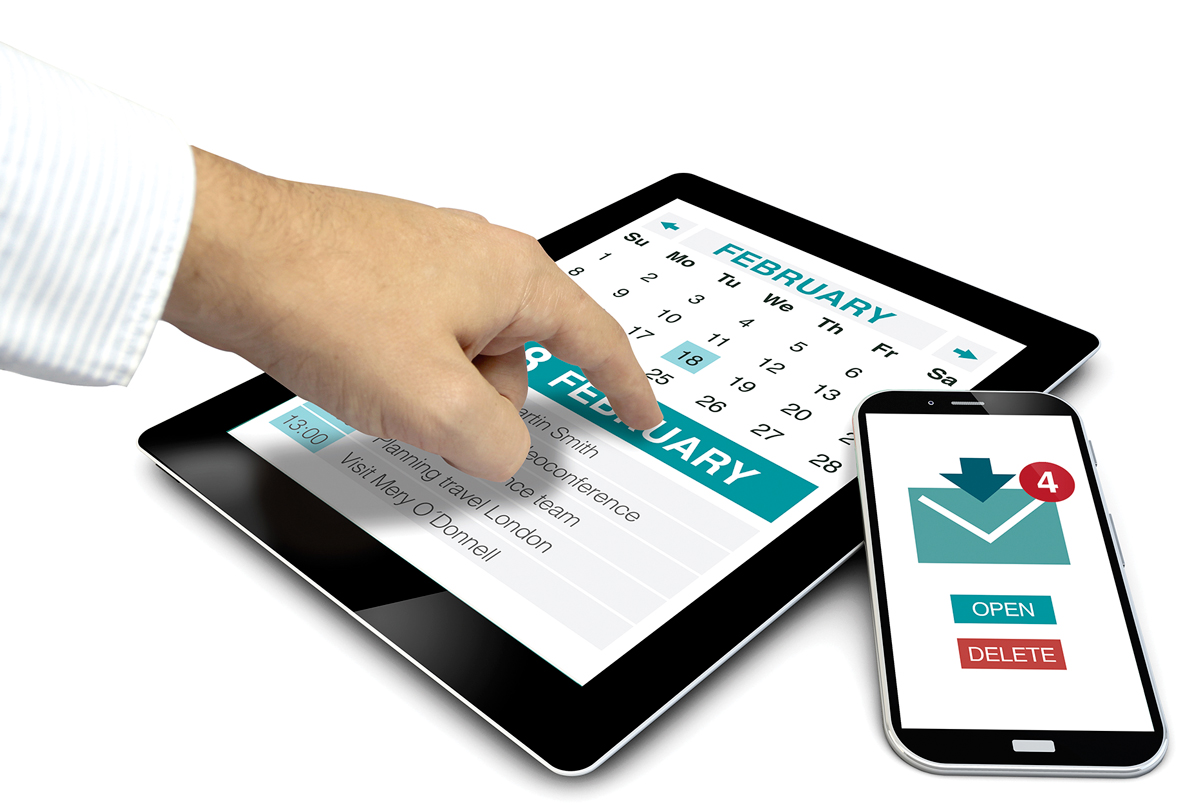BY PAT CHARLA
 In a perfect world, you’d enjoy flawlessly paved streets with no traffic, sensible airport layouts, and fresh leads that are automatically turned into quality sales without any prompting whatsoever. But alas, the world is far from perfect, and nurturing leads is a necessity for most businesses.
In a perfect world, you’d enjoy flawlessly paved streets with no traffic, sensible airport layouts, and fresh leads that are automatically turned into quality sales without any prompting whatsoever. But alas, the world is far from perfect, and nurturing leads is a necessity for most businesses.
Lead nurturing is the process of maintaining a warm and cozy relationship with your prospective customers as they enter and move through your sales funnel. Notice that it’s called a process, not a one-time task: The goal is to produce an ongoing engagement that takes time, effort, and a number of stellar strategies to get right.
This article outlines 10 of those strategies, each falling under a different time frame when the strategy typically takes place.
Starting Off: New leads need to be welcomed warmly to form a fabulous first impression.
Fanning the Flames: Existing leads need personalized attention based upon various factors.
Keeping On: Leads that appear to be dead, sleeping, on the cusp of a sale, or sold, can still benefit from some lead-nurturing TLC.
Knowing the No-Nos
Before you even get to the starting line of best lead-nurturing practices, it’s imperative to be familiar with the worst practices so you know what to avoid. Automated marketing software provider Marketo serves up a number of pitfalls that distinctly outline what lead nurturing is not: It is not regular newsletters, blasting to your entire email database whenever you have a bit of news, or random emails to quiet prospects asking if they’re ready to buy.
Lead nurturing is sending out a carefully selected, personalized message that matches the buyer’s needs, wants, interests, and location as closely as possible in the sales funnel. You can spot-check if your own messages fall within this definition by asking yourself: Would the information I’m sending be useful to the recipients, even if they never buy from me? If you can answer yes, you’re on the right track to an effective and informative lead-nurturing adventure.
1. Ask Permission
You must ask before staying in touch with each prospect, unless you want a batch of annoyed prospects. Opt-in sign-ups are a good start, since intended recipients willingly provide their email addresses. The double opt-in is even better: Here, a user provides their email address, and you send them a follow-up asking for permission to send additional messages their way. Keep the polite trend going by always offering an obvious way for users to unsubscribe to your emails, a move that also complies with the CAN-SPAM Act.
In addition to agitated recipients, unrequested messages, otherwise known as spam, can hurt your business in other ways. If consumers mark your emails as spam—and they will if you contact them without permission or solicit them too often—it can hurt your credibility with the top email providers. Then, the people who do want to receive your emails will not because they will be automatically relegated to the “spam” folder. This is an action that is hard to reverse.
Another polite introductory strategy that can help ensure your relationship with the prospect starts out on a respectful note is by determining preferences. Here, you can offer multiple-choice options on your opt-in page, welcome email, or order forms that let recipients pick and customize their communications by topic and frequency.
2. Welcome Incoming Leads
Now that you have the recipient’s permission and preferences on record, you’re ready to launch into the first type of lead-nurturing campaign to start warming up your prospects. Marketo points out that your goal of this preliminary campaign sets the tone for the entire relationship you’re going to build. Your aim is to develop trust and respect while being a good listener. You also want to make things interesting.
A welcome campaign is your chance to make an awesome first impression. It’s also a chance to determine where your leads are in the sales cycle. Here, you can review the company’s size, the contact’s buying role, the source of the lead, and their online behaviors. These include the number of website visits and the type of information they sought out with each visit. Putting all the information together lets you classify a lead into cold, warm, or hot categories, so you know how much, and what type, of nurturing to use going forward.
Hot leads, for instance, are likely to have multiple website visits. They probably also checked out information, such as rate quotes, the fleet, and your contact information. They may have responded readily to your emails, or requested information about special offers. At this phase, you can fan the flames to keep them in your sales funnel.
3. Kick Your Existing Database Into Gear
Welcoming new leads is important, but your existing database is a goldmine of customer contact information, either from currently active or past purchasers of your services. Because you already learned how important it is to be respectful at the onset of a lead-nurturing campaign, your first move is to send out a permission request to the addresses in your database.
Automated programs can be a giant help throughout the nurturing process, and sending messages to your existing database is prime time to use one. The message can include a section to note their preferences, so you know their interests and how frequently to send it. This will also help to determine if existing information you have about them is current and accurate—they may have switched jobs and they might need a good service at their new location. This maneuver can instantly net you hundreds, if not thousands of leads ready for nurturing a repeat sale.
 4. Stay in Touch With Existing Leads
4. Stay in Touch With Existing Leads
A “stay in touch” lead nurturing campaign is a useful strategy to gear toward prospects who are not yet ready to make a purchase. And yes, that can be most of them. These campaigns are also called “drip” campaigns, because they “drip” relevant content to prospects over a period of time. This content is meant to give them useful information while continuously building trust in the credibility of your ground transportation business. Maintaining this slow and steady drip of information keeps your service in the forefront of their mind. This way, when it comes time to book a ride, they’ll remember your spectacular messages and hopefully give your services a try. 5. Match Content With Funnel Location
You will want to keep an eye on all your leads from the minute they enter your system. Automated programs are ideal for this move, too, as they can instantly track behaviors, progress, and movement through the sales funnel. Knowing where your prospect stands is important, because you want to match the lead nurturing content you send with their location in the funnel. Marketo and Pardot, which is part of Salesforce, offer suggestions on the type of content that works well for various sales cycle positioning:
New leads early in the process: Helpful blog posts, entertaining infographics, and educational pieces like eBooks and whitepapers
Warm leads already armed with some information: Service overviews, industry reports, and buyer’s guides
Hotter leads ready to buy: Price quotes, materials focused on transportation solutions, deeper information on your company, competitive differentiators, special pricing and offers, and sales proposals
Customers who have already made purchases: Service updates, upcoming specials, and renewal notices
The buying process is rarely guided by straightforward, logical, and linear movement. Prospects may swing from warm to cold to hot and back to warm again as they ping-pong through the cycle. Keep this in mind so you can match them with content that suits them best at any stage of the game.
6. Consider the Buyer
The buyer is always king in the marketing arena, so your lead nurturing will be most effective if you keep the needs, wants, and habits of the consumer at the top of your mind throughout all stages of the process. Marketo serves up several tips to help you do so:
❱ Keep busy schedules and short attention spans in mind. Create content that’s easy to scan and digest during your corporate buyers’ harried days. Short and to-the-point wins out over lengthy and time-consuming.
❱ Create content that’s valuable to the consumer, not self-promotional for your business. You want to engage the reader with information they’ll want to absorb, not sales pitches outlining what you want them to buy.
❱ Know when to get personal, and never, ever, get pushy. Both customers who have already purchased your services and prospects late in the sales funnel may merit more personal emails than those early in the game. Take the opportunity to truly get to know your customers and prospects when it’s appropriate, a move that can help build more of that trust and credibility as well as ultimate loyalty.
 7. Master the Frequency
7. Master the Frequency
Properly timing your lead nurturing efforts is a biggie. Too many emails can annoy prospects, while too few can make them forget you exist. Consider a timeline like this:
Day 1: Welcome and introductory email
Day 10: Email with new content
Day 15: Personal email from representative
Day 30: Email with whitepaper outlining best practices
Day 45: Personal call from representative to “check in”
Day 60: Email inviting them to a tour or special discount
Day 75: Personal email from representative offering other service specials
Day 85: Call from representative to schedule face-to-face meeting
Day 90: Email with sales proposal
8. Keeping On A lead can leave the sales funnel for several reasons. They can purchase your services and complete the cycle. Alternatively, they can be on the brink of a deal, or otherwise seemingly disappear. Both cases still leave you with lead-nurturing opportunities.
9. Tread Lightly Near Sales Use an extremely light touch with those who have already purchased your services, or those who are on the brink of buying. Sending them aggressive emails can scare them off, ensuring they’ll cross you off their list for future sales. These messages are a good time to get personal, thank them, or simply check in to see if there’s anything else they need to enhance their experience with your firm.
10. Wake the Dead or Sleeping While certain leads may be truly dead, you’ll never know for sure unless you give them one last gentle nudge to see if there’s any life left. Your first move is to determine why the leads disappeared to begin with. Perhaps they weren’t authorized to buy. Or, maybe they were receiving irrelevant content. They might have found a better deal with a competitor, or they may have moved to a different job. Addressing any issues surrounding their reason for sleeping can renew the relationship, as can an offer that sweetens the pot. Offer a discount, special price, a one-time incentive, or another type of deal that can quickly revitalize their interest to get them back into the lead-nurturing process.
Summing Up
By now, it should be abundantly clear that lead-nurturing is an ongoing process that doesn’t stop, even after a sale. Different lead nurturing strategies apply at different stages of the game. Some work at the onset, while others work to strengthen the relationship as prospects move through the funnel. Still others kick in when the lead is about to buy or has already made a purchase. To win the game of lead nurturing, it’s imperative to combine strategies in order to reach the consumer at the stage they’re at. [CD0218]
Pat Charla is the founder of DriveProfit. She can be reached at pat@driveprofit.com.

